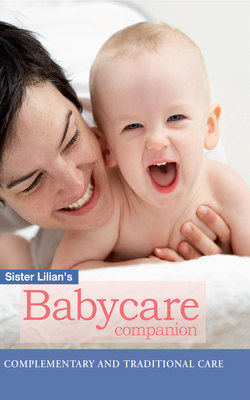Читать книгу Sister Lilian’s Babycare Companion: Complimentary and traditional care - Lilian Paramor - Страница 38
На сайте Литреса книга снята с продажи.
Physical Issues SURPRISING THINGS ABOUT YOUR NEWBORN
ОглавлениеEven if you’ve read all the books and listened to all your friends, there are many little things about your own special bundle of joy that will come as a surprise – and that’s great, because they are all milestones on the path of parenting discovery. Here are six things that might not only surprise you, but even concern you a little. Understanding them will put your mind at rest.
•The size and/or softness of your baby’s fontanelle. Baby actually has four soft spots at the meeting places between the skull bones. The biggest is the anterior fontanelle on top and slightly to the front of the head and the second biggest is the posterior fontanelle, situated on the midline of the curved rear surface of the skull. There are two much smaller ones on either side of the head, but to most people these are not even detectable. These fontanelles and the sutures that join them enable the skull bones to mould over each other for an easier birth and the brain to continue its rapid growth after birth without hindrance by a set structure. The anterior fontanelle will close at between six and eighteen months. Run the pads of your fingers gently over the anterior fontanelle to acquaint yourself with its size and how it feels normally. Do not be scared when washing Baby’s hair, simply be gentle over this area. If closure of the anterior fontanelle occurs more slowly than usual, your baby may need the tissue salt Calc phos (2). Babies with extremely big heads with a large fontanelle and scrawny bodies often require the tissue salt Silicea (12). Should the anterior fontanelle ever bulge in a pronounced way, and your baby has a fever or seems ill, see your doctor. If it is particularly sunken and Baby is not drinking well, vomits or has diarrhoea, immediate medical attention for dehydration is necessary.
•Baby’s breasts and genitals are swollen. Both newborn boys and girls usually have hard nodules under their nipples and the area might even look swollen to the naked eye. A little girl’s labia (the lips around the vagina) and a boy’s scrotum are usually amazingly enlarged in proportion to their overall body size. This has nothing to do with pressure during the birth process but is simply the result of exposure to Mom’s hormones during pregnancy. There might even be a slight, bloody vaginal discharge in the case of a baby girl. None of these symptoms need concern you and they will settle down within a week or two.
•Your baby’s grasp reflex is exceptionally strong. One of the tests your doctor or midwife will do soon after birth is to check this reflex, as one of the indications of tone, development and well-being. Place an index finger in each palm of your baby’s hands and see how she automatically grasps tightly. Slowly pull her upwards from a prone into a sitting position and she will not let go. This instinctive reflex will gradually disappear. Until it does, it will be quite difficult to prise her fingers off anything she latches onto.
•Most babies sleep like tops for the first three to five days of life. No doubt the arduousness of birth has something to do with this and maybe also the adaptation to life on Planet Earth. Whatever the reason, it is certainly quite a surprise if you have been preparing yourself for lots of tears and interrupted sleep. There will be some of that but it is likely to be less than you imagined. Babies with jaundice are more tired, and big babies who do not feed well or frequently enough will need special attention, but for all the others, let sleeping babies lie and enjoy it while you can.
•Breast babies pass stools about 8 to 10 times a day in the first month to six weeks. Once the meconium phase has passed (that’s the thick green-black sticky stool of the first few days), a breastfed baby is likely to do a poo at every feed and often more than once at each sitting! Some will be big and explosive, others just a smear in the nappy. Breast babies’ poos are mustard in colour, soft as unfrozen ice cream and containing what looks like little sesame seeds. They are easy to clean and are not at all smelly. After this six-week period, the stools will reduce in number to as little as one in five days – still soft and easy to clean.
•Babies can sleep deeply while drinking their milk. You might well have seen Madonna-like pictures of a sleeping baby at the breast, but have you ever paused to think whether or not this can really be done? Well, it can, and yes, they can be fast asleep, eyes tightly shut and little jaw chomping away at the breast or bottle. All this without choking, spluttering or any other unwanted reactions. Feeding from the breast especially is hard work; and the nurturing effect of milk while cuddled in Mom’s arms adds to this sedative mix. Breastfeeding moms should take a leaf out of Baby’s book and also catch 40 winks while Baby feeds. Lie down comfortably and make up for broken nights. Babies on formula should not lie flat as they may be prone to ear infections from milk leaking into the ear via the Eustachian tube. Hold them at a 45-degree angle in your arms.
